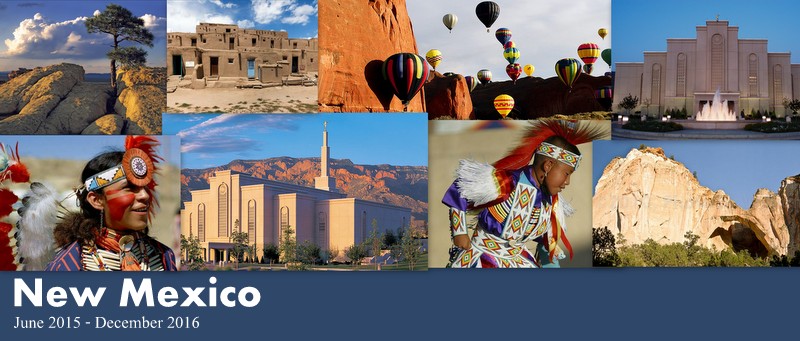Our Senior District will be visiting different sites in the mission. Our first visit was to Chaco Canyon. The roads into the Park are difficult when wet so it was decided to visit this National Park first.
The Chacoan people's cultural flowering began in the mid-800s and persisted over 300 years. Using masonry techniques unique for their time, they built massive, multiple-story stone buildings (Great Houses) with hundreds of rooms- far larger than any they previously had built. Buildings were planned from the start; rooms weren't just added to existing buildings as needed. Construction of some buildings planned decades or even centuries. Each great house is unique, but all share recognizably Chacoan architectural features.
They were often oriented to solar, lunar and cardinal directions. Lines of sight between them enabled communication. Sophisticated astronomical markers, communication features, water control devices, and formal earthen mounds surrounded them. They were set in a landscape surrounded by sacred mountains, mesas, and shrines that still have deep spiritual meaning for their descendants.
By 1050, Chaco was the ceremonial, administrative and economic center of the San Juan Basin with a large sphere of influence. Roads linked dozens of Chaco Canyon great houses to over 150 great houses in the region. We don't think great houses were traditional farming villages with large populations but probably impressive examples of public architecture used for ceremony, commerce, and trading when temporary populations came to the canyon for these events.
Pueblo descendants say that Chaco was a special gathering place where many peoples and clans converged to share ceremonies, traditions and knowledge. They traded with peoples from the sea shores and Central and South Americas. They found sea shells, feathers from South America birds and jars with chocolate in them.
Elder Palmer, Elder Boyter, Elder Dalton, Elder Huffaker at the Visitor Center of Chaco Culture National Park
This is an artist painting of what the complex looked like. They are unsure how many stories but they think 5 to 6 stories high.
Sunday, September 20, 2015
Fort Wingate Branch President
President Joe is the Branch President of Fort Wingate Branch in the Gallup Stake of the Church of Jesus Christ of Latter-day Saints. He is a very warm and caring president. We invited his family to our home for Sunday dinner. Left to right: Britney (Seminary Student), Bradley (YSA), Tiffany(blue blouse is a neighbor), Tiffany, President Joe, Teresa (wife) and Malia. We loved having them in our home.
40th Wedding Anniversary
While we are on our mission in New Mexico we celebrated our 40th Wedding Anniversary. This picture is taken in front of Window Rock about an hour from Fort Wingate. It has been a blessing to be married to my best friend. He has been a wonderful husband, father and companion. Serving missions with him has been a delightful experience to start our retirement years.
Route 66
At one time Route 66 cut through the Petrified Forest National Park. A 1957 Cadillac grill and bumper was used to make this. Since this was from Elder Boyter's favorite Cadillac, it was a special surprise.
The 1932 Studebaker has been left to mark where the highway came through. After posting this picture on Facebook, friends and family sent us pictures of what this car looks like restored.
The 1932 Studebaker has been left to mark where the highway came through. After posting this picture on Facebook, friends and family sent us pictures of what this car looks like restored.
Agate House
We hiked two miles round trip to see the Agate House. It is a seven room pueblo reconstructed from petrified wood. It sits on a hill. It made me wonder about the story behind the it being built hundreds of year ago. What were the people like, what brought them here and why did they leave.
A look inside the pueblo through a window.
A look inside the pueblo through a window.
Painted Desert
The Painted Desert is part of the Petrified Forest National Park. It was hot but enjoyed the hikes through the Painted Hills. Some times the Painted Desert is also called Badlands.
There were Petrified Logs along our walks.
There were Petrified Logs along our walks.
Subscribe to:
Posts (Atom)






































